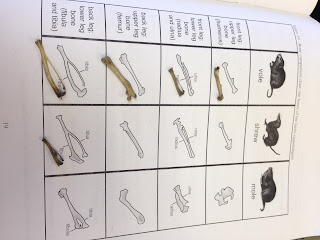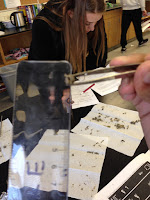In Anatomy, we are working on a project called 20 Time. 20 Time is when you spend 20% of your time working on whatever inspires or motivates you, usually with an altruistic motive to give back to the community fueling the approach. It's used in big companies such as Google, where 20 Time projects gave way to bigger things. For example, on employee felt that the current mail system was too slow, so he created Gmail.
For my 20 Time project, I wanted to know different/healthy ways to reduce student stress. After researching the topic, I found out about coloring books that were tailored to adults, filled with intricate drawings of mandalas and other patterns. Although not described as form of art therapy, there was evidence showing how coloring reduced stress, increased focus, and led to an overall better sense of self. I decided that I wanted to draw my own coloring book and make it an in-between of an adult coloring book and a child's. I want to include the basic mandala designs inside of an outline that brings teens back to their childhood.
At the end of this project, I want to have the start of a coloring book, and I can do this by doing a creating page a week. If I continue to follow those outlines, then by the end of the project I should have the beginnings of a complete coloring book with about 14 pages inside of it.
Some challenges will be trying not to make the patterns in the book overly repetitive and coming up with new and interesting ways/ patterns to keep the audience occupied. Below is an example of a pattern that I want to try to draw sometime in the process :)
Monday, February 29, 2016
Friday, February 26, 2016
Owl Pellet Dissection
In this lab, we did a dry dissection of a barn owl's pellet. The pellet is formed from all of the indigestrible materials obtained when a owl eats. It compacts all these indigestible materials, like bones and feathers, and regurgitate them. Since an owl's diet primiarily consists of small rodents such as mice, voles, and shrews, we hypothesized in the beginning that we would get one of those animals.
 |
| Pellet Mass: 10.72g Length: 6.5 cm Width: 3.3 cm Heigh: 2.4 cm |
 |
| Pellet next to ruler for scale |
Inside of our owl pellet, we think that we had two small rodents: a vole, and a shrew. When we compared the bones that we found and measured them, we found two different sizes of bones and leg bones. Two of the bones were the size of a vole, but then the other one was slightly smaller and had a different end than a vole leg bone, making it a shrew. In addition, we found two bones that came together to form a complete shrew pelvis, confirming what we suspected: that there were two animals in the pellet. Since voles are larger than shrews, we measured each of the bones and categorized the larger and thicker ones to the vole and the smaller and skinnier ones (especially the extra leg bones) to the shrew. The average size of the vole's leg bones was about 15 cm long, and the average size of the shrew was about 10 cm.
 |
| Comparison of bones |
Compare/Contrast to Humans:
 |
| Comparison of Human and Shrew Pelvis |
The pelvis of a shrew is more elongated than a human pelvis. The ischium loops are much bigger, and rather than being round they form a oval shape and the other bones stick out from the ischium to make a dagger-like shape, which the human pelvis does not have. The pelvis also seems to be broken into two parts, although that may also be from the barn owl digestion. Both pelvis's have the same ischium loops, albeit in different lengths, and come to support the hips and attach to the legs with the same sort of joints. Although humans and voles walk in different ways, the pelvis still attaches to the femur in roughly the same way.
 |
| Mandible Comparison |
The jaw of the vole differs from the jaw of the human as well. A human's mandible is more U-shaped, while the jaw of a vole resembled more of a V-shape and is sharper. The teeth of a ole are also sharper as well, with the only "sharp" teeth in the human mouth are the canines, and even then it doesn't reach the sharpness of a vole tooth. The difference is tooth structure signifies the difference between diets of the human and the vole as well. Both the mandible from the humans and the voles hinge to the skull/cranium/maxilla area, and are connected with the same type of joints that allow the crushing and grinding motions needed to start the digestive process.
In a human leg, the tibia is the load-bearing bone and is larger and thicker than the lateral fibula. However, in a vole, the opposite is true. The fibula is thicker than the tibia, suggesting that the fibula is the load bearing bone opposed to the tibia. The tibia and fibula are also fused together into one bone, while in the human skeleton, they remain as two bones. However, in both skeletons, the flared ends of the bones are there, the epiphyses area, which is where the bones attach to the other bones, either the patella or the talus. It is also clear in both structures that the bones are used for the same purpose of movement, although they have different load-bearing bones.
 |
| Another picture of vertebra |
 |
| One of the vertebra we found in the pellet |
Subscribe to:
Comments (Atom)

